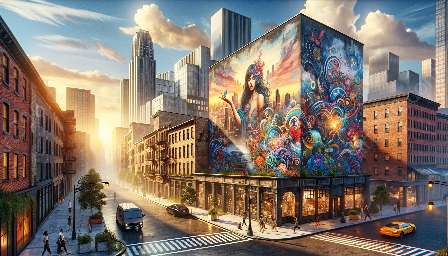Street art has been an influential and reflective medium within popular culture for decades, with its roots in the history of graffiti and public art. This form of artistic expression has the power to shape and mirror the social, political, and cultural landscapes of our world. In order to understand the impact of street art on popular culture, it’s important to delve into its history and how it has evolved over time.
History of Street Art
The history of street art can be traced back to ancient times, with examples of public art and graffiti found in civilizations throughout the world. However, modern street art as we know it today emerged in the late 20th century, particularly in urban areas during the rise of subcultures such as hip-hop and punk.
During the 1970s and 1980s, graffiti became a prominent form of expression in cities like New York, where artists aimed to make their mark on the urban landscape. This movement gave rise to names like Keith Haring and Jean-Michel Basquiat, who used public spaces as their canvas to communicate powerful messages and critique societal norms.
Street art continued to evolve, with artists exploring new techniques and styles, from stencils and paste-ups to large-scale murals. Additionally, the advent of the internet and social media has enabled street art to reach a global audience, further expanding its influence on popular culture.
The Influence of Street Art on Popular Culture
Street art has had a profound impact on popular culture, influencing fashion, music, advertising, and more. It has become a symbol of urban creativity, transforming neglected spaces into vibrant works of art that resonate with local communities and tourists alike.
One of the ways street art influences popular culture is by challenging societal norms and addressing pressing issues. Artists often use their work to shed light on topics such as inequality, environmental concerns, and human rights, sparking important conversations and raising awareness.
Moreover, street art has the ability to reflect the cultural zeitgeist, capturing the mood, trends, and values of a particular time and place. Whether through political satire or uplifting messages, street art serves as a visual representation of the collective consciousness, embodying the spirit of the communities in which it is created.
Reflection of Popular Culture in Street Art
Conversely, street art also acts as a reflection of popular culture, mirroring the interests and attitudes of society. Artists draw inspiration from current events, pop icons, and social phenomena, creating pieces that resonate with the public and become part of the cultural landscape.
For example, street art often celebrates local heroes and cultural icons, immortalizing them in the public domain. It also serves as a platform for marginalized voices, providing a canvas for underrepresented communities to express their experiences and struggles.
Additionally, street art has become intertwined with mainstream culture, with brands and institutions commissioning artists to create captivating murals and installations that contribute to the visual identity of a neighborhood or city.
Conclusion
Street art is a dynamic and influential form of artistic expression that both shapes and reflects popular culture. With its rich history and profound impact on society, it continues to evolve and inspire, transcending boundaries and resonating with diverse audiences across the globe.

